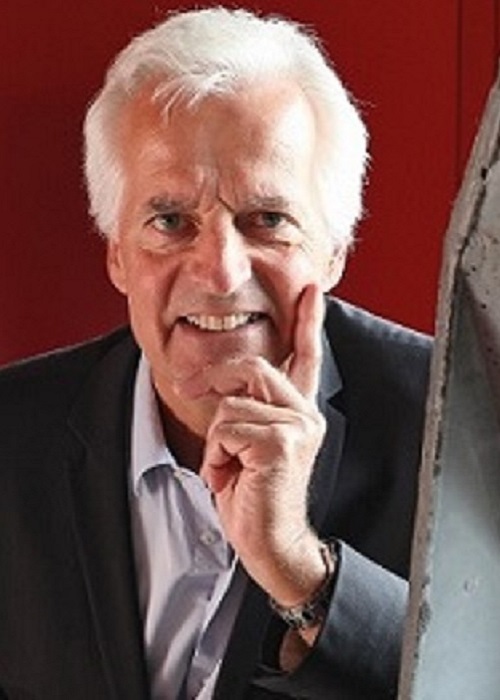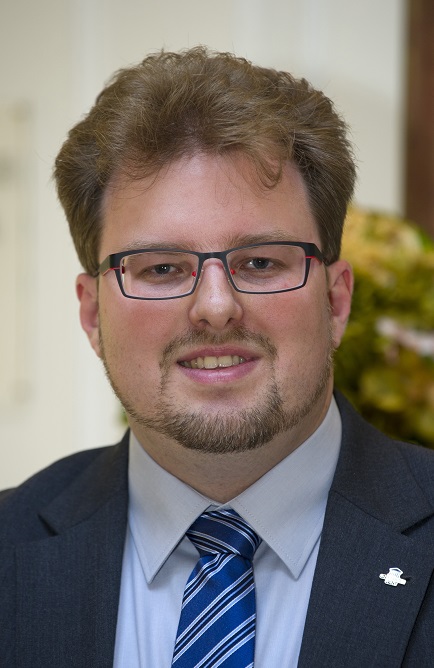MS 01 Prediction and Extension of the Service Duration of Bridges
|
Ayaho MiyamotoYamaguchi University, Japan |
|
Eugen BrühwilerEPFL, Switzerland |
|
Risto KiviluomaWSP, Finland |
|
|
|
Akito YabeKOZO KEIKAKU Engineering Inc., Japan |
Life cycle bridge maintenance has been widely discussed for establishing the rational maintenance strategies of existing bridges. However, prediction of the end of service duration is highly complex and multi-oriented issue even a key technology for holistic bridge maintenance decisions. We know the “Examineering (Examination Engineering)” as a new concept towards smart bridge maintenance that is widely adapted to learn new things from sustainable development goals(SDGs) point of view. Then, we need methods to extend of the service duration for existing bridges based on either materials data (durability) or structural properties data (load carrying capacity, fatigue) or both data combined. We also need to identify the signals and indicators to be considered to control the service duration.
The main objectives of this Mini-Symposium(MS) are 1) to develop methods for predicting the service duration of existing bridges through data related to durability, load carrying capacity and environmental impact, 2) to identify vital signals for determining the end of service duration of bridges and to make decisions regarding the end of bridge service, and 3) to verify predictions of service duration of existing bridges.
For this purpose, we intend to discuss durability, load carrying capacity and remaining service duration evaluations assisted with state-of-the-art digitalized technologies including smart monitoring systems, non-destructive testing and digital twins. Various viewpoints shall be discussed in the “MS on Prediction and Extension of the Service Duration of Bridges”. We are expecting to collect more than 16 papers for this mini-symposium.
MS 02 Field testing of existing bridges
|
Eva LantsoghtUniversidad San Francisco de Quito and Delft University of Technology |
|
Gabriel SasLuleå University of Technology, Sweden |
|
Jacob SchmidtAalborg University, Denmark |
This mini-symposium aims to showcase how recent innovations in bridge testing have led to service life extension of existing bridges using enhanced field testing practices, ultimately contributing to more accurate assessments. We invite submissions of case studies and papers discussing advancements in the following areas: recent code updates- or developments in the field of bridge testing, integration of numerical analysis (or digital twins) and field testing, probabilistic aspects of field testing, advanced measurement techniques, incorporation of field testing into bridge management systems, decision-making processes for field testing within bridge assessments, and the connection between field testing and long-term bridge monitoring.
MS 03 Life-Cycle Performance Assessment of existing bridges in an Aggressive environment
|
Mitsuyoshi AkiyamaWaseda University, Japan |
|
Dan M. FrangopolATLSS Engineering Research Center, USA |
|
Hiroshi MatsuzakiNational Defense Academy of Japan, Japan |
Existing bridges designed without adequate durability level deteriorate severely. To confirm whether these deteriorated bridges still satisfy the safety and serviceability requirements, it is necessary to investigate the effect of the material corrosion on the bridge’s capacity and stiffness. Using inspection results, the epistemic uncertainties associated with the service life reliability prediction of existing bridges can be reduced.
The aim of this Mini-Symposium is to attract contributions dealing with the use of advanced computational and/or experimental techniques for evaluating the life-cycle performance of existing bridges in an aggressive environment. For these bridges, multiple environmental and mechanical stressors lead to deterioration of structural performance. Such deterioration will reduce their service life and increase the life-cycle cost associated with maintenance actions. This Mini-Symposium coverscurrent theoretical and experimental efforts made in the assessment and future prediction of performance, maintenance and strengthening of existing bridges in an aggressive environment.
The following topics would be addressed:
- Life-cycle analysis of existing bridges based on reliability approach
- Application of machine-learning models to life-cycle performance assessment of existing bridges
- Updating the reliability of existing bridge by incorporating inspection results
- Long-term deterioration model of bridge performance
- Visual inspection or advanced structural health monitoring techniques
- Related topics with laboratory or field experiments on aging bridges
MS 04 Life‐Cycle Redundancy, Robustness and Resilience of Bridges and Infrastructure Networks under Multiple Hazards
|
|
|
Fabio BiondiniPolitecnico di Milano, Italy |
|
Dan M. FrangopolATLSS Engineering Research Center, USA |
Notable events of bridge collapses due to accidental loads, environmental aggressiveness and related phenomena, such as corrosion and fatigue, indicated structural redundancy and robustness as key factors for a rational approach to life‐cycle design of deteriorating bridges and infrastructure systems. Structural resilience is also an important indicator in bridge engineering to express the capability of bridge structure and infrastructure systems exposed to extreme events, such as earthquakes, to withstand the load effects and to recover efficiently the original configuration. However, the concepts of redundant, robust and resilient structure and infrastructure systems, or damage‐tolerant systems, are still issues of controversy, since there are no well established and generally accepted criteria for a consistent definition and a quantitative measure of these performance indicators. The proposed Mini‐Symposium follows the successful events organized at previous IABMAS conferences and is aimed at presenting advances on this subject and providing conceptual and analytical design tools that can effectively be implemented in design practice for measuring and evaluating the life‐cycle redundancy, robustness and resilience of bridge structures and infrastructure networks under multiple hazards, with emphasis on theinteraction between seismic and environmental hazards in aggressive environments.
MS 06 AI and Robotics for Bridges: Monitoring, Assessment, and Maintenance
|
You DongHong Kong Polytechnic University, Hong Kong |
|
Dan M. FrangopolATLSS Engineering Research Center, USA |
|
Bing WangThe Hong Kong Polytechnic University, Hong Kong |
|
|
|
Xiaoming LeiThe Hong Kong Polytechnic University, Hong Kong |
Modern societies depend heavily on infrastructure systems such as bridges, tunnels, and highways, which necessitate substantial resources for inspection and maintenance. As such, field of robotics and artificial intelligence technology is becoming increasingly popular in providing efficient and effective solutions for bridge monitoring, assessment, and management. The Mini-Symposium will integrate diverse areas of expertise, such as robotics technology, bridge engineering, computer vision, and data science, to develop innovative solutions for bridge monitoring and inspection, advanced sensing and imaging technologies, mobility and dexterity of robots, big data analysis, maintenance via deep reinforcement learning, and enhancing the resilience of bridges.
The following topics would be addressed:
- Robotics technology for inspection and maintenance
- Computer vision techniques for bridge assessment
- Sensor and imaging technologies for monitoring
- Human-robot collaboration in monitoring and maintenance
- Reinforcement learning for decision-making in life-cycle maintenance
- Life-cycle resilience enhancement using AI and robotics"
MS 08 Sustainable and efficient monitoring and digitization-based decision-making models
|
|
|
Alfred StraussUniversity of Natural Resources, Austria |
|
Dan M. FrangopolATLSS Engineering Research Center, USA |
Climate change, mobility, demographic change and digitalization are just some of the major challenges facing our society. They inevitably influence our thinking and actions. Against this background, engineers and scientists must use ""condition-based and predictive maintenance"" to ensure a visible and substantively correct measure for the future-oriented guarantee of a functional, reliable and sustainable infrastructure.
Condition-based maintenance is based on monitoring the existing infrastructure. This implies sensor-based, systematic and continuous condition recording. The selection of suitable sensor technology and monitoring systems, the embedding of new sensor technologies and research into the long-term properties of sensor systems is the basis for consistent data over long periods of time. Infrastructure condition assessment must be understood in a dynamic context. This makes it possible to understand and appropriately assess changes in condition caused by anthropogenic and environmental processes. The large number of sensors used and their degree of automation mean that machine learning methods are increasingly supplementing classical statistical methods, such as time series analysis, in order to extract and evaluate relevant information (in real time) from the enormous amount of data that is generated. The resulting findings based on digital twin are important pillars for assessing the reliability of infrastructure on different time scales. The aim of this mini-symposium is to present and analyze sustainable and efficient monitoring and digitization-based decision-making models.
MS 09 Novel Technologies and Information Fusion for Structural Health Monitoring of Bridges
|
Chul-Woo KimKyoto University, Japan |
|
Vasilis SarhosisUniversity of Leeds, United Kingdom |
|
Jun LiCurtin University, Australia |
|
|
|
Yi ZhangTsinghua University, China |
Despite significant research activity, structural health monitoring (SHM) technology has not yet been widely accepted by authorities caused of few satisfactory results in real-world applications. The aim of this Mini-Symposium is to provide a forum in which scientists and engineers from academia and industry can present their state-of-the-art research results on bridge monitoring strategies focusing on real-world applications and successes. The Mini-Symposium covers the following topics but is not limited to novel technologies in SHM; monitoring-based decision-making on structural integrity; monitoring information fusion; data storage and feature extraction; uncertainty quantification in SHM, computer vision-based structural measurement techniques, and UAV applications.
MS 10 MS Application of probabilistic techniques for the assessment and performance prediction of corroding concrete bridges
|
Robby CaspeeleGhent University, Belgium |
|
Wouter BotteGhent University, Belgium |
|
Rutger VrijdaghsBuildwise, Belgium |
|
|
|
Beatrice BellettiUniversity of Parma, Italy |
|
Joan Ramon CasasUPC, Spain |
Over the past decades, research has focused on probabilistic aspects related to the design of new structures. More recently, reliability-based assessment of existing and degrading structures has gained particular attention due to the inherent uncertainties in the assessment process, such as uncertainties related to material properties, degradation processes, etc. Also, Bayesian updating techniques allow to fully exploit the combined knowledge available from information gathered through inspections and/or monitoring of existing structures. Nevertheless, application of probabilistic methods and techniques to practical cases remain rather limited. Therefore, this mini-symposium focusses on case studies in which the above mentioned techniques are applied and/or validated.
MS 11 Towards the realization of the Submerged Floating Tunnels
|
Yiqiang XiangZhejiang University, China |
|
H.K. LeeKorea Advanced Institute of Science and Technology (KAIST), South Korea |
|
Beatrice FaggianoUniversity of Naples Federico II Napoli, Italia |
|
|
|
Raffaele LandolfoUniversity of Naples Federico II Napoli, Italia |
|
Luca MartinelliPolitecnico di Milano Milano, Italia |
The aim of the MS would be to hold a discussion on the current state of acquired knowledge regarding Submerged Floating Tunnels (SFTs) as innovative, smart and sustainable infrastructure for waterway crossings, in view of the development and consolidation of this new technology. Specific topics could include the theory, design, and construction methods of SFTs, as well as related experimental research, applications, and subsequent codification. In addition, attention could be given to aspects related to the sustainability of SFTs including environmental and economic impacts, as well as their digital or intelligent monitoring, maintenance, and management duringconstruction and operation, aimed at multi-disaster prevention and mitigation of SFTs.
MS 12 Decision-making in bridge management - Gaps between research and practice and recommendations for the future
|
|
|
Poul LinnebergCOWI, Denmark |
|
Alfred StraussUniversity of Natural Resources, Austria |
Infrastructure systems, such as bridges, are a driver for economic growth and sustainable development of countries. Similarly, development of operation and maintenance strategies for infrastructure systems may aim at optimal management using Key Performance Indicators (KPIs) such as reliability, redundancy, availability, safety, economy, environmental performance, and resilience. Recent research and development projects highlight that infrastructure managers make decisions based on a mix of qualitative and quantitative data from various sources paired with models of various level of complexity as well as expert judgement. Similarly, recent state-of-the-art from academia reports on a variety of different decision-making models applicable for optimal management of infrastructure systems. One of the aims of IABSE Task Group 5.4 is to highlight the gap between current practice and scientific developments in existing infrastructure management, so that practitioners and academia can target their efforts for the benefit of both. The need of bridging the gap between practice and research is of paramount importance. The aim of this mini symposia is therefore to invite academia, owners, operators and consultant together with the aim of identification of those areas of bridge management decision-making in which the developments of the practical expert knowledge and academia should be brought together, in some cases far apart, to achieve more effective, future-oriented solutions. On the one hand, the existing gaps (technical, educational, contractual and/or economic), on the other hand, the mitigation measures and our recommendations for the future should be highlighted.
MS 13 Bridge Loading – Measurement and Modelling
|
Colin CapraniMonash University, Australia |
|
Andrzej NowakAuburn University, USA |
|
Eugene O'BrienUniversity College Dublin, Ireland |
|
|
|
Xin RuanTongji University, China |
Loading is the most variable term in the structural reliability problem. Since resistance modelling is fairly well understood, in the assessment of existing bridges in particular, the accurate estimation of loading can obviate or reduce the need for replacement and rehabilitation measures, potentially offering bridge owners (and society) enormous savings. Continuing on from the success of this mini-symposium at IABMAS 2014, 2016, 2018, and 2020, this mini-symposium will examine all forms of loading for pedestrian, highway, and railway bridges, including, but not limited to, long- and short-span bridges, vehicle and traffic modelling and measurements, dynamics, statistical analysis, earthquakes, pedestrians and non-linear modelling methods. Those involved in the measurement and modelling of loading, both static and dynamic and the calibration of theoretical models, are particularly encouraged to submit their work for presentation in this mini-symposium.





























